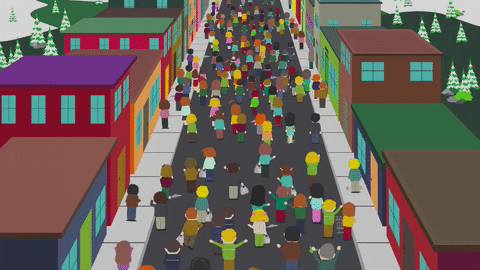|
Housing is up more than 240% since 1989 and up 56% since 2013. WILD, right?? Well, take those numbers with a grain of salt.
In certain areas, yes housing may appear unaffordable to some. But it’s actually not as bad as it looks. To put home prices into context, look at mortgage rates over time. Typical interest rates were greater than 10% in 1989. 10%!!! So while prices were far lower back then, the cost of borrowing was way higher. And after adjusting for inflation AND interest rates, monthly mortgage payments are now actually 30% lower than they were in 1989. Now ok fine, admittedly these statements don’t exactly apply to very high cost of living areas like New York City or Silicon Valley. But the point is, housing is not as expensive as it appears to be based solely on its sales price. You just have to look at the bigger picture to make a more realistic assessment. The pandemic has somehow pushed median Bay Area home prices over $900,000. You read that right—you need nearly a million dollars to purchase an average home here! *insert crying emoji*
As we’ve seen for the last year, high demand for single-family homes in suburban areas and tight inventory has driven home prices up tremendously in most Bay Area counties (with San Francisco home prices being the one exception at less than 1% growth). All-cash offers, waived inspections, and competitive bidding wars have become a mainstay in the real estate market these days. One agent in San Ramon mentioned seeing luxury homes sell for TWICE the county’s median home value in recent months. And buyers are even looking to snap up properties in outer-suburban cities like Gilroy, Manteca, and Morgan Hill. Looks like single-family neighborhoods are about to get a whole lot more crowded. Bay Area cities are starting to allow the construction of multi-family units like in-laws and fourplexes in residential areas.
Why? Because housing costs are out of control and single-family zoning (and its racist past) is to blame. It turns out that single-family zoning, which limits development to one home per lot, was actually created in 1916 (in Berkeley of all places!) to keep Black-owned dancehalls and Chinese laundromats out of certain neighborhoods. I guess people didn't like clean clothes or fun times back then? Fast forward a century and now it's just keeping out everyone who can't afford a single-family home. So it's time to break up the white picket fence monopoly and create more housing options for BIPOC. While it's certainly not the end-all-be-all solution to racism in real estate, it could be a baby step in the right direction. It's rough out there for home buyers—bidding wars, crazy fast appreciation, and homes going into contract in a week! A strong stock market and low interest rates have increased the purchasing power of buyers. With such fierce competition, buyers need to get pre-approved and be ready to go see homes the second they hit the market to stand a fighting chance. You know what they say: “If you stay ready, you don’t gotta get ready”...or something like that.
Also, plot twist: millennials are unexpectedly the ones driving this market, buying multi-million dollar "starter homes". Amazing what you can afford once you stop going out to brunch for avocado toast. Remember last March when the world shut down and we all rushed to the grocery stores to buy toilet paper in an irrational panic? Well, here we are one year later and that same energy seems to have translated to any decent house that pops up on the market. Along with many other agents, I've been spending the last many months taking a brutal beating with my buyers in this insane housing market. Buyers are waiving all contingencies and far exceeding the comp prices just for the chance to get a house. 20, 30, even 40+ offers are not uncommon anymore. And there's no signs of this letting up for the rest of the year. But unrelated good news: at least we get to procrastinate one more month until May 17th to do our taxes!
In a strange turn of events, rent levels and home prices have diverged across the country. Home values increased in all of the 100 largest metros in the U.S. But in some of the richest cities—rent prices fell, many by double-digit percentages.
Why is this very unusual trend happening? Like so many other financial and social matters, it might be the economic divide. The pandemic has unfortunately widened the gap between those who are thriving financially and those who are barely scraping by. While the stock market continues to go up, making wealthy people even wealthier, millions of Americans remain unemployed and struggling. And the same is happening in our housing market. As demand for homes soars and prices are increasing at a much faster pace than incomes, high-end homeowners are seeing their property values skyrocket. Meanwhile, those looking to purchase low to middle-tier houses are finding it difficult to even afford a place. But they're not ending up where you might think. SF residents are indeed leaving the city in droves, but they're not going very far. We keep hearing about this mass exodus to more affordable places like Austin or Denver, but USPS data shows that they're mostly heading across the bridges to other Bay Area counties including Alameda, San Mateo, and Marin. Maybe after things return to normal(ish), everyone will want to head back to the city again and there will finally be more inventory everywhere else!
ATTOM Data Solutions, the company that holds the premier U.S. property database, released its annual 2020 Grocery Store Wars analysis, which shows that living near certain stores like Whole Foods, Trader Joe’s, or ALDI, can largely impact home appreciation. They found that homes near a Trader Joe’s took the lead in home equity with homeowners earning an average of 37% equity compared to 33% for Whole Foods and 26% for ALDI.
For investors, it was the properties near ALDI that provided an average gross flipping ROI of 58% compared to 36% for homes near Whole Foods and 30% for Trader Joe’s. Honestly, my plan was always to live near a Trader Joe’s anyway. Have you tried their bon bons?? But now that I know it can get me higher home equity too? Win/win. What a wild ride this year was.
We’ve all had to make jarring adjustments to how we live (curled up on the couch), how we connect with one another (muted on Zoom), how we spend our money (currently navigating a love/hate relationship with Amazon and Doordash), and how we plan our lives (around my clients' schedules obviously). While this year brought many changes, they somehow managed to ground me in a way that nothing else but a pandemic-induced quarantine could. Strangely enough, it was the nothing to do-ness of 2020 that made me work harder than I ever have before. During a time where social interaction is possibly against the law (not sure if that's actually true but you know what I mean), I've managed to make a decent career out of meeting strangers at other strangers' houses (something my parents would've strongly advised against) and even doubled my business in what should've been the most unlikely year to do so. Very much looking forward to a new year meeting new strangers in strange houses. :) Demand for housing has continued to rapidly grow throughout 2020, and it is only expected to surge even further as economies reopen in 2021. Zillow predicts that annual home sales will reach their highest since the 1980s, forecasting nearly 22% growth.
They also believe that city living will make a comeback next year, especially as the vaccine becomes more widely available to the general public. While a lot of young adults moved back in with their parents this year to save money, it is likely that once the economy bounces back, they will be moving back into big urban areas in droves. (Does that mean the sad SF condo market will finally make a comeback??) Zillow also expects that buyers will continue having a hard time affording homes, particularly if mortgage rates start to increase in 2021 and housing prices remain high. At the same time, if rates are indeed predicted to rise later in the year, this may cause an even bigger buyer frenzy for those looking to lock in low rates ASAP. Sadly there seems to be no end in sight for bidding wars. :( |
Michaela ToAll things real estate. Categories
All
Archives
April 2022
|



